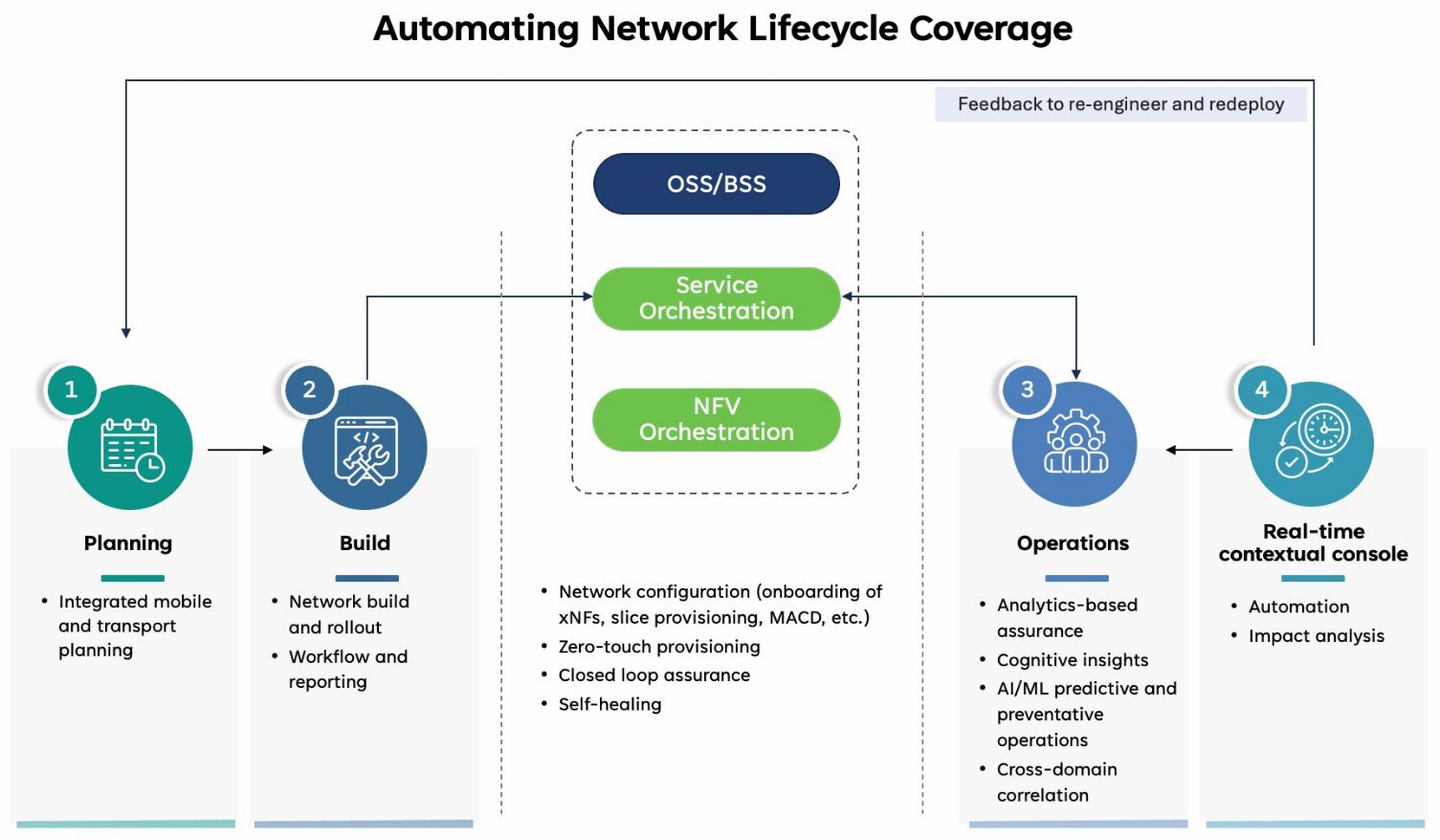5G, IoT, and edge cloud offer huge potential for operators to increase their revenue multifold, by transforming the way they offer services to their customers. At the same time, there are concerns about costs related to new spectrum, new radio, 5G core and control plane elements, increased capacity and low-latency transport networks, virtualization/containerization, and slicing and orchestration requirements. Many top tier-1 operators have already taken up network optimization and end-to-end network lifecycle automation to optimize these costs.
Industry Expectations on End-to-End Network Automation
Many top operators have started their first steps in unified IT and network operations. In our view, the automation has to be seamless, modular, and end-to-end for the entire network lifecycle, spanning planning, engineering, deployment/rollout/transformation, operations, and optimization. Telecom operators are looking for cost optimization, less manual intervention, improved quality of service, scalability, and enhanced security. In order to cater all these requirements, capabilities like end-to-end network automation, robotic operations, and zero-touch provisioning must be deployed along with a modernized network.
A modernized network and accurate inventory management systems are basic building blocks to enable E2E network automation. Network modernization can be driven by technology transformation initiatives like NFV/SDN, disaggregated networks, segment routing, and 5G deployment.



